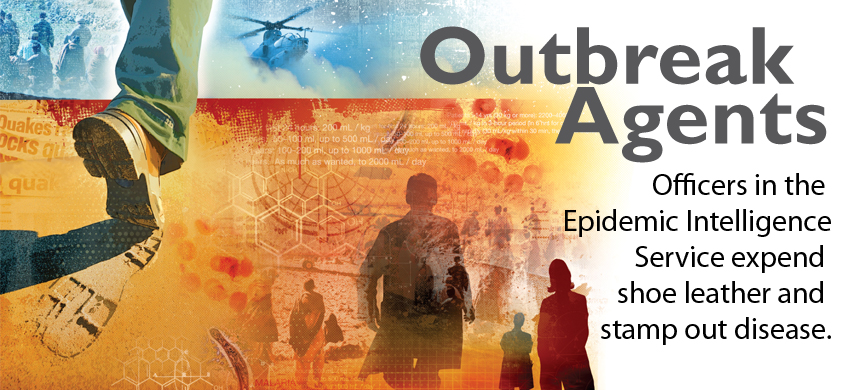
By the 1960s and the Vietnam War, Langmuir could skim the cream from medical and public health schools as faculty advisers recommended that recent grads apply so as to avoid military service, recalls Henry Mosley, SPH ’65, professor emeritus of population, family, and reproductive health at the Bloomberg School. “I was looking to do some kind of alternate service. I applied to EIS, and D.A. Henderson interviewed me. It was very competitive back then, and I had the added trouble of my draft board back in Oklahoma breathing down my neck,” says Mosley, who was then serving as a medical resident at Johns Hopkins. “I was this close to heading off to war when I received a letter from the CDC on the day before my induction” into the Army.
Mosley did EIS fieldwork in Indonesia and Kenya from 1961 to 1963. During one expedition to the Philippines, he tracked and documented the first known case of cholera transmission caused by seafood. People were eating uncooked shrimp called hipon at local bars and becoming ill, suffering the telltale bouts of debilitating diarrhea and dehydration. Through investigation, Mosley identified a vendor who sold shrimp caught in a lagoon rife with sewage, effectively ending the outbreak. “I had had no experience with cholera,” he says. “But very few of us who joined EIS had much experience in anything. We were clinicians.”
Mosley bounced between CDC hitches in East Pakistan and several professorial and chair appointments at Johns Hopkins. He served two stints of six and nine years in Dhaka, Bangladesh, presiding over arguably the most significant moment in the history of treating cholera, which still infects up to 5 million people worldwide each year. Scientists at the International Center for Diarrheal Disease Research, which was co-founded in Dhaka by Mosley and currently maintains a partnership with Johns Hopkins, had discovered a way to replace the gallons of fluids cholera sufferers lose during the course of the disease. At the time, death rates could reach 50 percent. Since vaccines then were only effective half the time, devising a new treatment method was paramount. “The problem with cholera patients is they need to replace water and salts, but you can’t give them just water and salts because the body won’t absorb them,” Mosley says. “You need to give them glucose as well to transport water and salt across membranes, including the gut. The trick was to find the right mix.”
It was problematic enough that some patients taking part in trials of one similar mix in the Philippines had died. Perhaps because of those deaths, a clinical research director at the center wouldn’t allow trials of a new combination concocted by Mosley’s research colleagues to go on. Mosley, with Langmuir’s help, slyly circumnavigated the edict. At Mosley’s behest, Langmuir sent two additional EIS officers to help run the trials on 150 people in Dhaka. EIS personnel and the clinic’s researchers worked in the lab and in the clinic together in secret. “Basically, this was collusion between me and Langmuir,” Mosley says. “The other guy never realized we were running a clinical trial up there.”
The astonishingly successful results of their trial led so-called oral rehydration therapy to become the new standard for treatment. During the war between East and West Pakistan in 1971, oral rehydration therapy saved thousands of lives of people in the refugee camps in neighboring India and soon-to-be Bangladesh, Mosley says. Nowadays, it is largely credited with reducing the disease’s death rate to around 1 percent.
When a cyclone wiped out an East Pakistan island in the Bay of Bengal that year, Mosley and an EIS officer whom he had hired, Alfred Sommer, wrote an exhaustive paper on the extent of the damage, what help was needed to forestall the outbreak of disease, and how residents responded in the face of a dire emergency. “That investigation ended up being the longest paper ever published in The Lancet,” says Sommer, now associate dean and professor at the Bloomberg School. “It got the whole field of disaster epidemiology started.”
